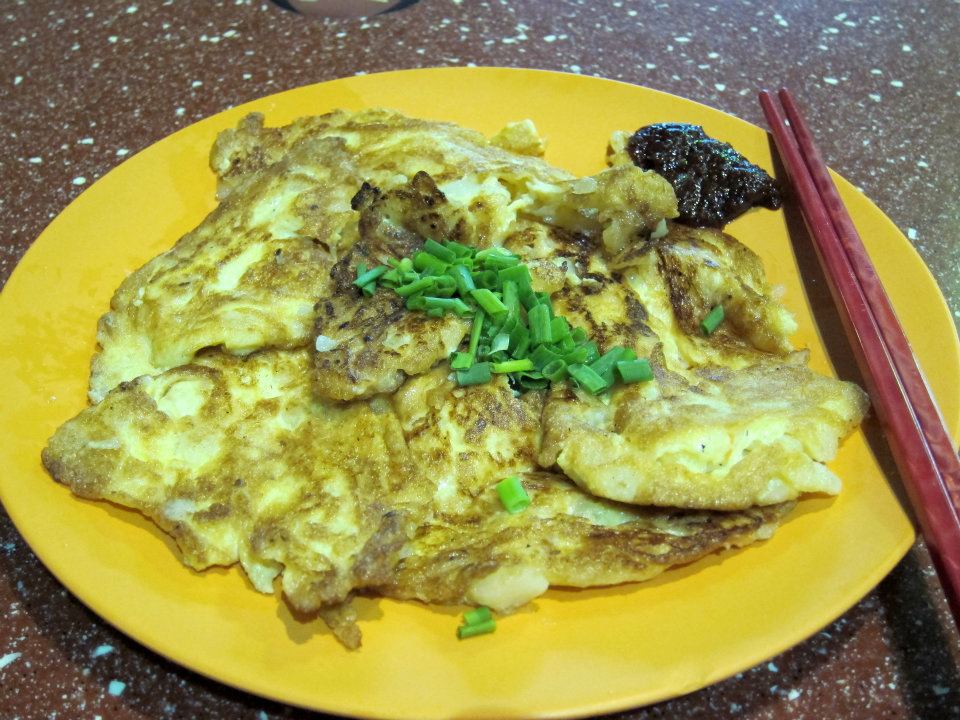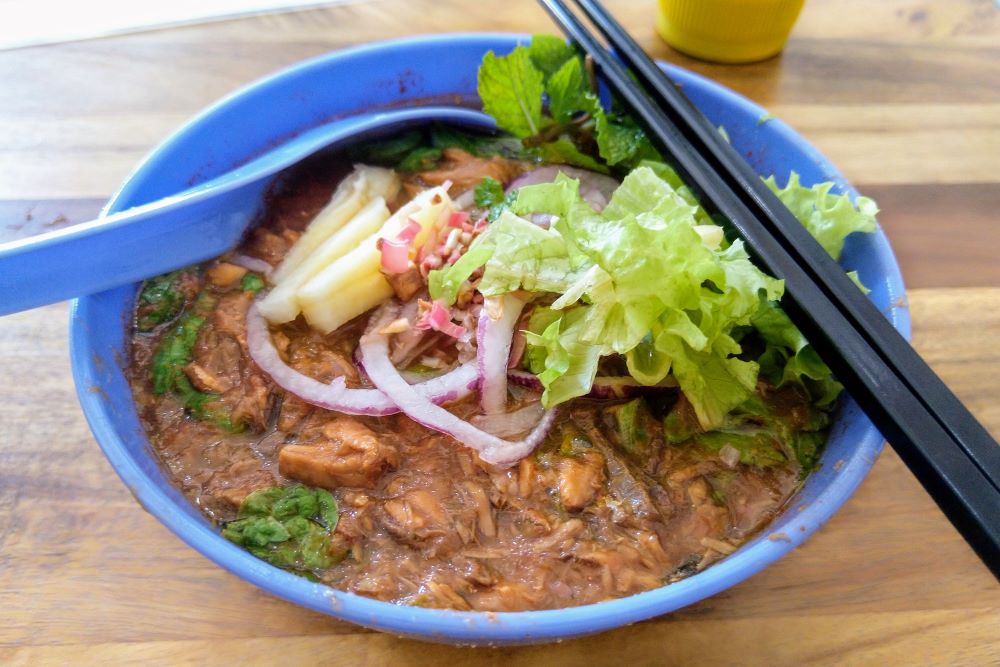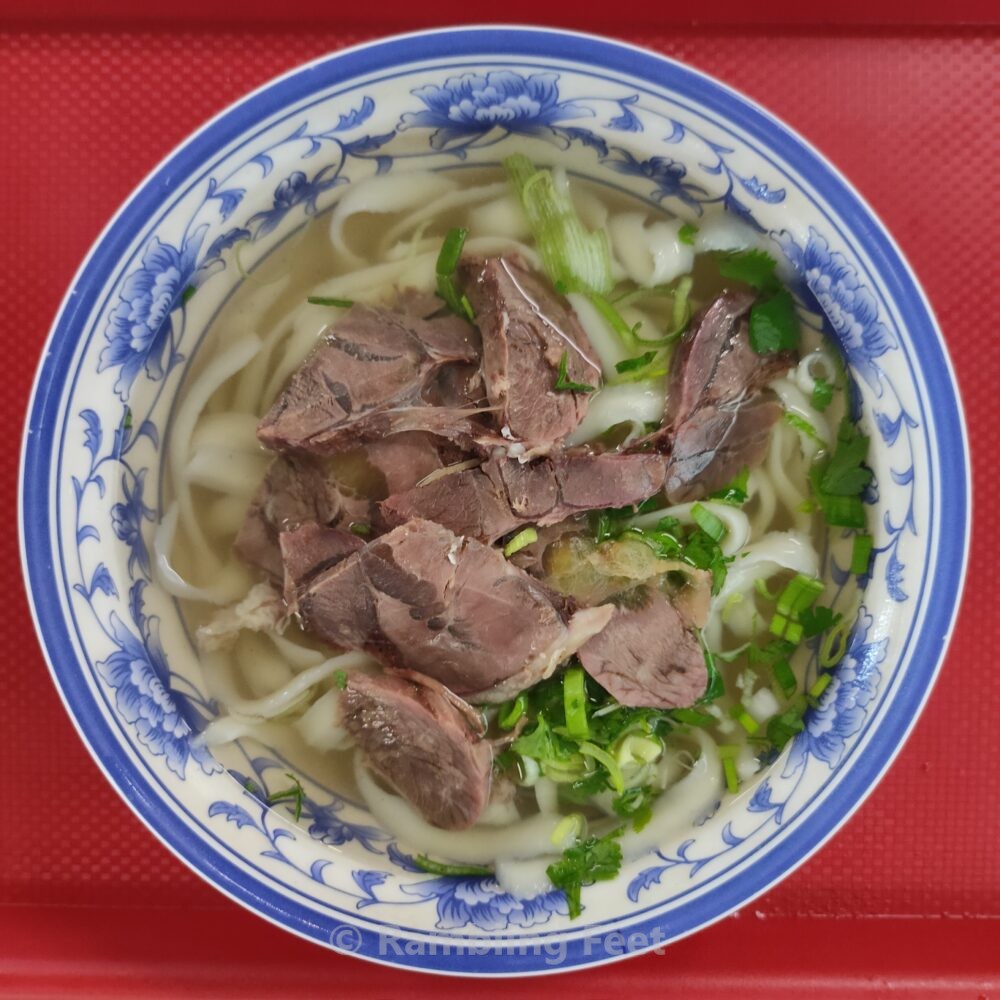A Food Allergy Sufferer’s Essential Guide to Eating Out in Singapore: 6 Common Allergens in Hawker Dishes
Asian cities are great for their street food, but the ingredients that go into these delicacies and their condiments may contain food allergens that diners aren’t aware of. For a visitor with a food allergy, staying satiated, comfortable and alive requires extra research and planning. In this post, I’ve focused on common local dishes in Singapore since I’m familiar with them. Hopefully, the knowledge translates into a less painful experience in the city-state for you and your guests with food allergy.
Note: Please take this as a general guide to what goes into various dishes. It’s not exhaustive, and I cannot guarantee that you will be alright if you follow this guide. I cannot account for individual recipe variations that include ingredients that you are allergic to.
Lasted updated:
About Food Allegens in Singapore
Singapore’s cuisine reflects the ethnic mix of its people; therefore, there are usually options if you’re allergic to an ingredient that one culture frequently uses in its food. The cheapest places to get one’s fill are the hawker centre, but there are also cafes and restaurants that serve up refined versions of the local cuisine.
However, awareness of food allergy here is low compared to America, Europe and Australia. Some restaurants mark the dishes that do not contain allergens on their menus; however, establishments that are completely free of (insert allergen here) are rare. Contrary to Ronnie Chieng’s joke, it’s just plain ignorance and has nothing to do with “strengthening the gene pool”.
Although the Singapore Food Agency regulates the labelling of packaged food, there isn’t a local agency that certifies or administers standards to dining establishments in this manner. Hawkers are much less likely to tell you what goes into your food, especially if there is a long line of people behind you.
The following six ingredients affect 90% of the world’s food allergy sufferers. I’ve listed the dishes that you probably didn’t know contain these allergens and, where possible, the establishments that omit them.

Eggs
Food allergy culprits
- Any food that is battered and fried;
- some types of tofu;
- fried carrot cake (which is actually made with daikon);
- wheat noodle varieties such as u-mee/mee kia and mee pok;
- wanton and dumpling skins;
- egg wash on pies, bread and puffs;
- custard buns (liu sha bao) and tarts;
- fish soup (may include crispy egg threads);
- some mooncakes; murtabak (an Indian-style crepe filled with meat, eggs and onions–plain prata may be contaminated if fried on the same griddle);
- fried rice
- Mee rebus and mee siam often have a boiled egg topping
Examples of relatively safe hawker dishes
Satay, chicken rice (order it alone and beware the braised egg in the set meals), Cantonese roast meats (same as with chicken rice sets)
Dairy/Lactose intolerance
Food allergy culprits
- Fish and bitter gourd soup (milk is added sometimes);
- White beehoon (not the rice vermicelli itself but a dish stir-fried with pork and seafood, sometimes enriched with condensed milk)
- packaged coconut milk used in curries and desserts.
- Note that roti prata, murtabak and biryani are sometimes prepared with ghee.
Examples of relatively safe hawker dishes
Almost everything other than the above is usually fine since Asians often suffer from lactose intolerance.

Fish and shellfish
Food allergy culprits
- Fried carrot cake (there is fish sauce);
- many spicy Peranakan and Malay dishes (belacan, or fermented shrimp paste, is a common component of spice mixtures);
- cincalok (fermented shrimp-and-rice mixture used as a condiment with beef noodles);
- Penang-style/assam laksa (fish and prawn paste go into this sour and spicy dish);
- Nyonya/Katong laksa (contains cockles, prawns and shrimp paste)
- rojak (Chinese and Malay versions contain prawn paste)
- yong tau hu soup stock (anchovies are used, while yong tau hu refers to vegetables and beancurd stuffed with fish paste or pork);
- Hong Kong-style wanton noodles (the soup may include shrimp roe);
- the sambal that goes into Chinese noodle dishes may contain shrimps too
- Thunder tea rice (lei cha or lui cha) often has a dried shrimp topping but you can ask to leave it out
- Good kimchi may also be prepared with oysters
- Satay beehoon contains added cockles and cuttlefish
- Stir-fried vegetables are usually prepared with oyster sauce, including side dishes for chicken rice
Examples of relatively safe hawker dishes
Cantonese roast meats on rice, chicken rice, popiah (wraps stuffed with braised jicama– but go without the prawns if they are offered), chwee kueh (steamed rice cakes topped with salted radish pickles).
The three types of food allergy above (dairy, eggs and seafood) can usually be avoided by dining at one of the island’s vegan establishments, such as Smoocht and Veganburg. You can use the HappyCow website or app to find others.
Peanuts, sesame seeds and nuts
Food allergy culprits
- Many spicy Peranakan and Malay dishes (candlenut is often an ingredient in the spice mix);
- the chilli paste of Chinese noodle dishes (candlenut sometimes);
- satay sauce, satay beehoon and massaman curry;
- rojak (as a topping on the fruit salad);
- pancakes (e.g. mee chiang kueh);
- kueh tutu (a steamed cake that may contain peanuts); tang yuan (rice flour balls with a nut, sesame or bean filling);
- nasi lemak (fried peanuts feature on the side);
- dishes fried with peanut oil
- Roasted sesame oil is often added to congee and chicken rice for flavour, while the light version is sometimes used to fry tempura
- Sesame seeds also appear on some Chinese, Japanese and Malay desserts
- Some ramen shops also serve sesame seeds as an optional garnish
- Any dish that has goma or a goma dressing contains sesame seeds
- Muah chee (a sticky rice dessert coated in crushed peanuts)
- Lo mai kai (glutinous rice often has fried peanuts)
- Cashews are also used in butter chicken.
Also: Don’t go to the Long Bar at the Raffles Hotel. There are peanut shells all over the floor and even the staircase leading to the birthplace of the Singapore Sling.
Examples of relatively safe hawker dishes
Mee soto, pork soup, beef noodles (some stalls add crushed peanuts to the starchy gravy version, however), roti prata and murtabak.

Soy
Food allergy culprits
- Dishes that use soy sauce (chicken rice, dark carrot cake, fried bee hoon or vermicelli, char kuay teow or fried flat rice noodles, Chinese-style roast meats and some types of chilli dip),
- fermented beans like natto or tempeh (in mee siam, a tangy and spicy noodle dish)
- kecap manis in Malay and Indonesian dishes (in ayam bakar or grilled chicken);
- sayur lodeh (coconut-based vegetable curry) that may contain tempeh;
- yong tau hu (there is beancurd and the soup may contain soy beans);
- dishes fried with soybean oil;
- Dark Klang-style bak kut teh is flavoured with soy sauce
- Thick yellow noodles that are offered at noodle stalls and with mee soto and mee rebus
- Mee siam is often topped with taupok (fried beancurd puffs)
- edamame toppings for salad bowls
- Malay rojak may contain tempeh
Examples of relatively safe hawker dishes
Soy is such a big part of East Asian cooking that I would simply suggest Indian dishes. It’s hard to know for certain what oils are used for cooking.
Celiac disease (gluten)
Food allergy culprits
- Things that contain soy or fish sauce (see above)
- Wheat flour is sometimes used to thicken gravies
- Note that “barley” drinks are usually prepared with Job’s tears, which are gluten-free
There are establishments which have gluten-free options on their menus, such as The Soup Spoon chain, Entre-Nous Creperie and Super Loco at Customs House and Robertson Quay, but there’s the risk of cross-contamination for very sensitive people. Then there is The Butcher’s Wife, where the menu is gluten-free. All these places usually do not serve Singaporean cuisine.
Tips for Visitors with Food Allergies
- Do your research. Reading this post is a good start, if I may say so. Search travel and expatriate forums and ask if you can’t get the answers you’re looking for.
- Going to a restaurant? Call well ahead to reserve a spot and let them know your needs. They’ll appreciate this far more than if you were to walk in unannounced and make your demands. If you have an allergen-free version of an essential condiment, bring it along for the restaurant’s use.
- Get a knowledgeable local to take you places and double up as an interpreter.
- Be prepared to go without. Spice mixes are usually prepared in the morning and not a la minute. The cook may not deem it worthwhile to make a new batch to accommodate you. Ingredients may be sometimes prepared in an off-site kitchen.
Let me know in the comments if I’ve missed something so that everyone benefits! And if you’re looking for things to do, have a look at my two-week Singapore itinerary. Feeling brave enough already? Here are five unusual dishes you can try.
This article was first posted on 27 January 2017.
17/09/2017 @ 9:57 AM
Hello, we live in Singapore and friends from New Zealand will be visiting soon. One of them has a sesame allergy. It will be his first time in an Asian country so a shame not to experience street food and restaurants. Are there some types of cuisine that don’t use sesame seeds or oil? Indian, Thai, Japanese for eg? Any other advice?
17/09/2017 @ 1:03 PM
Hi! Local Chinese and Japanese cuisine frequently use sesame seeds and oil in dishes such as congee, mochi/muah chee and chicken rice, so it is best to avoid them. Malay and Indian cooking don’t typically use those ingredients (other than in some desserts), but you may want to ask anyway.
21/09/2017 @ 5:46 PM
Hi. Thanks for the tips. Just wondering if you have any suggestions on a few restaurants that you find are more accommodating to allergies than others. Coming for a holiday soon and have one daughter with an egg allergy and one daughter with a dairy allergy. Many thanks.
25/09/2017 @ 1:35 PM
Thanks for reading! Depending on the severity of their allergies, you may be well-served by visiting those establishments that are vegetarian or vegan. There are good lists at Expat Living and The Smart Local. I haven’t enough experience with other establishments to know how accommodating they are.
27/05/2018 @ 12:33 AM
Hi
Thanks for all the great infomation. I have family just moved to Singapore, this will be our second visit. I like your 14 day guide, some of the places are on our to do list.
Can you recommend eateries for a friend who is allergic to coconut? How easy/difficult is it to avoid.
29/05/2018 @ 4:32 PM
Thanks for reading. I’m afraid I’m unaware of any eateries that leave out coconut (including coconut milk, water and sugar). However, generally, she’ll be fine if you avoid Malay, Indonesian and Peranakan dishes (nasi lemak, rendang, cendol, bubur chacha, sayur lodeh, laksa, pulut hitam, otak-otak, etc). A few Indian (some curries, sambar, putu mayam/string hoppers, appam) and Thai dishes (curries and desserts) call for it while Chinese cooking rarely does (sometimes it’s in a curry or a pancake filling). Some ice-creams (vegan ones and those flavours based on local desserts) and “potong” popsicles may also contain coconut milk. I hope this helps.
15/07/2019 @ 4:43 AM
Hello! Thank you for all this info! We are moving to Singapore and my children have multiple severe food allergies. Do you know any restaurants that have allergy menus where they list the ingredients of the dishes? Thank you so much for your help!
17/07/2019 @ 12:16 AM
The only restaurant chain I know of that lists individual ingredients is The Soup Spoon. Others like Kitchen by Food Rebel and The Living Cafe state whether their dishes are dairy/gluten/nut-free. I’m still keeping an eye out for the extra-helpful places. All the best with the move!
04/01/2020 @ 6:57 AM
Hi there,
I’m travelling to Singapore with a friend who will be celebrating a big birthday. I want to take her to a great place for lunch but I have food allergies (dairy, eggs, seafood, nuts, coconut). Do you know of a restaurant or two that is deliciously noteworthy but allergy-friendly as well?
Thanks in advance!
05/01/2020 @ 12:15 PM
Hi Zara, while these places are not free of the allergens you mention, they state prominently that you may talk to their staff:
29/01/2020 @ 9:19 PM
Great discussion!
My wife and I are in Singapore for Chinese New Year and we have both developed allergy to Nonya Kueh (green Singapore sweets). This has caused us hives and itching to the head, neck, arms and hands. BTW, she is Singaporean and neither of us can recall having this allergy before………….
Has anyone any idea what ingredient may have caused this please?
Grateful for your advice please.
Many thanks
30/01/2020 @ 9:42 AM
Sorry to hear about this and I hope you’re both alright now. There are many types of kueh and they may contain coconut, coconut milk, egg, pandan, gula Melaka, other kinds of sugar, sweet potato, tapioca, rice, peanuts, seafood (in the savoury types), colouring additives or other ingredients. If you have had that particular kueh elsewhere without any problems, it may just be that particular store. It’s difficult to pinpoint with the available information, though.